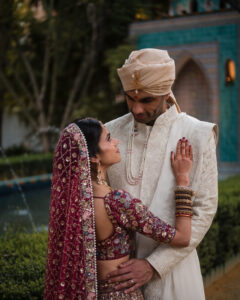Wedding rituals are associated with specific customs and superstitions in civilizations across the world. Germany is no exception: there are regional differences as well as foreign influences.
From smashing plates to sawing wood the Germans are certainly not short on quirky wedding traditions. So we’ve put a list of the weird and the wonderful traditions that you’re bound to see at any authentically German wedding.
Here are seven German wedding traditions you didn’t know:
1. Polter Night (polterabend)
Whilst the Greek love of smashing porcelain is well known. The Germans too share this fondness for destruction. Literally meaning “eve of making a racket” this is usually celebrated the night before a wedding and involves friends and family coming together to smash a bunch of porcelain for good luck.
The traditions related with polter night are likely pre-Christian in origin. Stoneware and porcelain (never glass) are violently destroyed by friends and family the day before the wedding to ward off bad spirits. The betrothed is generally responsible for sweeping up the fragments. To symbolise the end of bachelorhood, polter night in North Germany concludes with the burning of the groom’s trousers or the bride’s bra at midnight, whose ashes are buried next to a bottle of schnaps that is to be drunk a year later.

2. Sawing the tree trunk
The Germans are rather fond of playing games at weddings, a particular favourite is Baumstamm sägen – sawing a tree trunk. Whilst in Australia we may consider the act of severing wood to be the exclusive domain of strapping young men at the Easter show, in Germany brides are often expected to don a pair of gloves and start sawing away at a log of wood with their grooms shortly after their ceremony.
It’s an old custom to let the newlywed pair saw a log right after the wedding ceremony. It’s critical to push and pull in a balanced and well-timed manner. It shows how effectively the pair can work together to achieve success – cute!
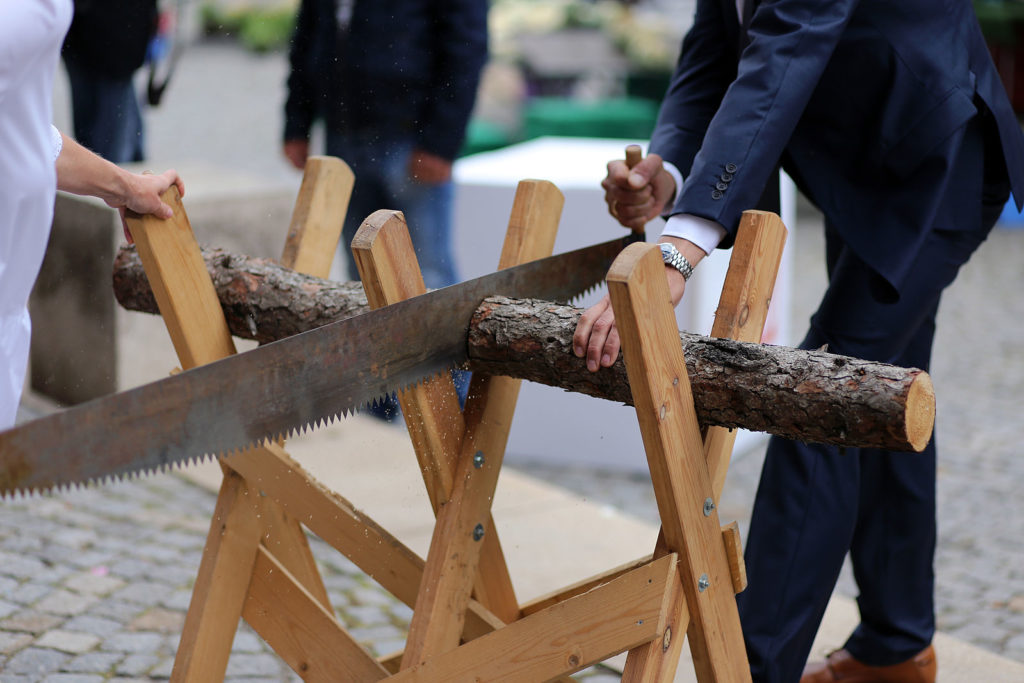
3. Junggesellenabschied (Bachelor Party)
Hens and bucks parties aren’t quite as popular in Germany as they may be in Australia, the US or the UK but when Germans do partake in the practice they call it Junggesellenabschied. This literally means ‘bachelors farewell’. As the respective bride or groom goes along their merry party-hopping way, they are required to sell things like shots and condoms carried on a little tray to strangers in the street.

4. The Veil Dance
Whilst some may consider it an act of sacrilege to destroy a piece of the brides outfit, Schleiertanz – the veil dance – involves just that. It all starts when the brides veil is taken and she and her husband are made to dance under it. Once the music has stopped, single women then try to rip off pieces of it.
Whoever collects the largest piece is said to be the next to marry. A variation of this tradition is having guests throw money on the veil. We prefer this version, and so would brides who are particularly fond of their veils.
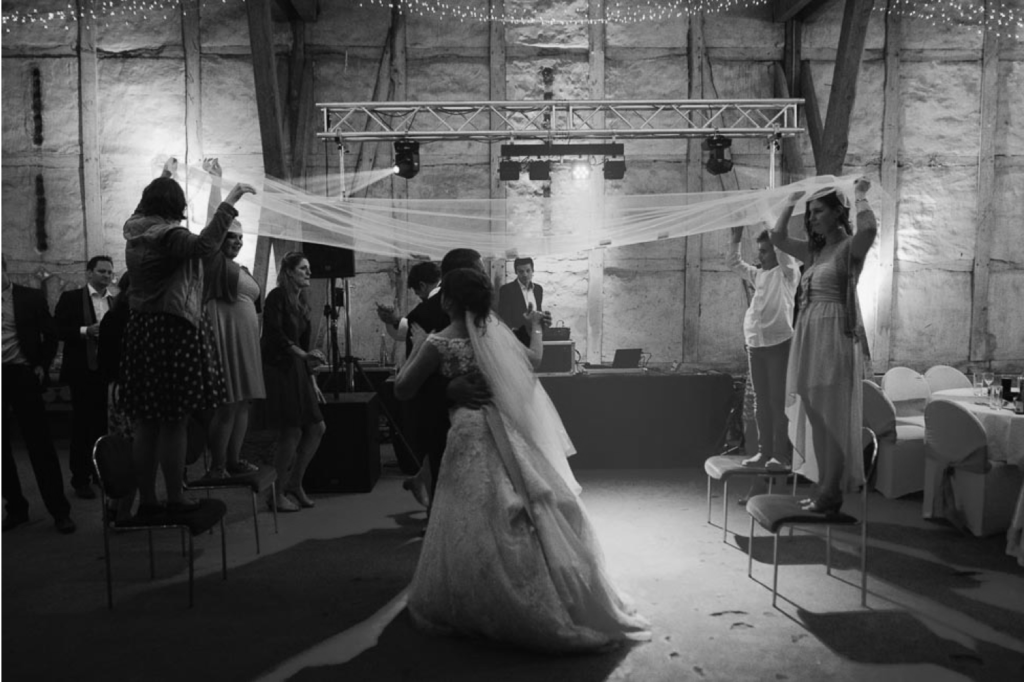
5. Invitations
The German practice of personalized invites puts our meager written invitations to shame. For their wedding invitations the Germans employ the services of a personal inviter. Adorned with ribbons and flowers the official inviter goes door to door to extend a personal rhyming invitation to the guests.
6. Kidnapping the bride
Before the wedding, it was common practise in Germany to literally ‘steal’ the bride. The best man of the groom was tasked with bringing the bride on a bar crawl while leaving clues for the groom to discover them. The bride and her ‘kidnapper’ may drink until the groom arrived and paid the bill to ‘rescue’ his bride. Bride-napping is becoming increasingly widespread in villages these days.
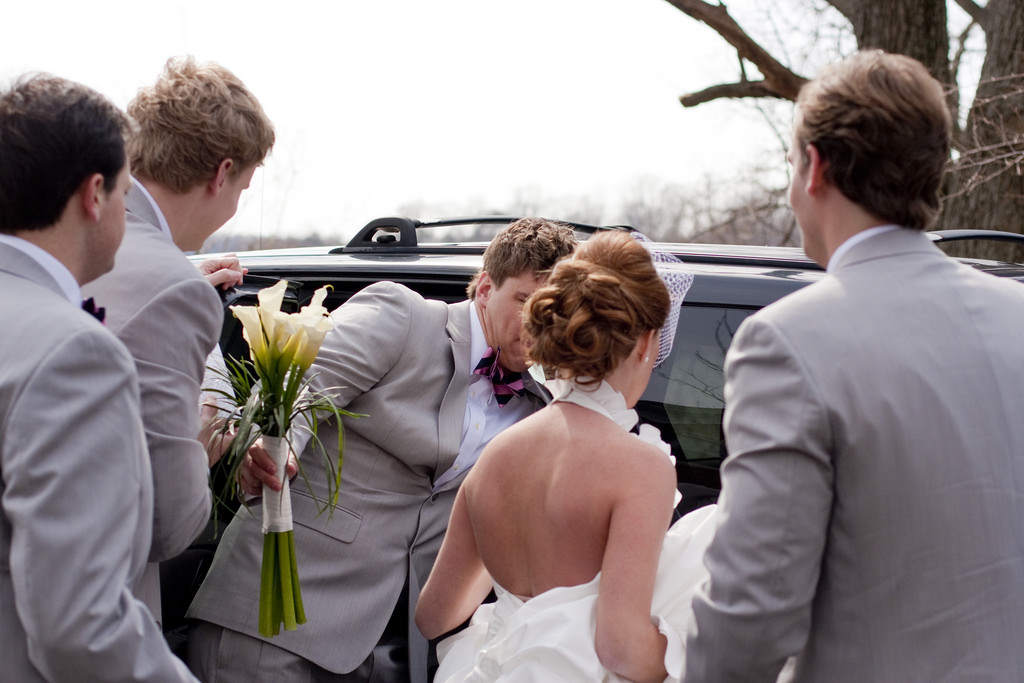
7. Bridal wear
The typical bridal attire in Germany differs somewhat from that in the West. While a German bride would almost always wear a white gown on her wedding day, large, sweeping trains are rare. Most German brides prefer ballgown-style gowns without a train, with a fingertip-length veil unless in a church, in which case a floor-length, cathedral-style veil is chosen.
The bride should pay for her bridal shoes with cent coins to demonstrate that she is a prudent spender. One of these pennies can be kept and placed in the bride’s left shoe during the wedding, insuring the bride’s fortune and love. Symbolically, one of the bride’s bridal shoes is auctioned off during the wedding ceremonies for the grrom to make the winning bid and return it to his bride.
On her wedding day, the bride carries a bit of salt and bread as an omen for a bountiful harvest, while the husband carries grain for good luck and fortune, according to an ancient custom still practised in some regions of Germany.
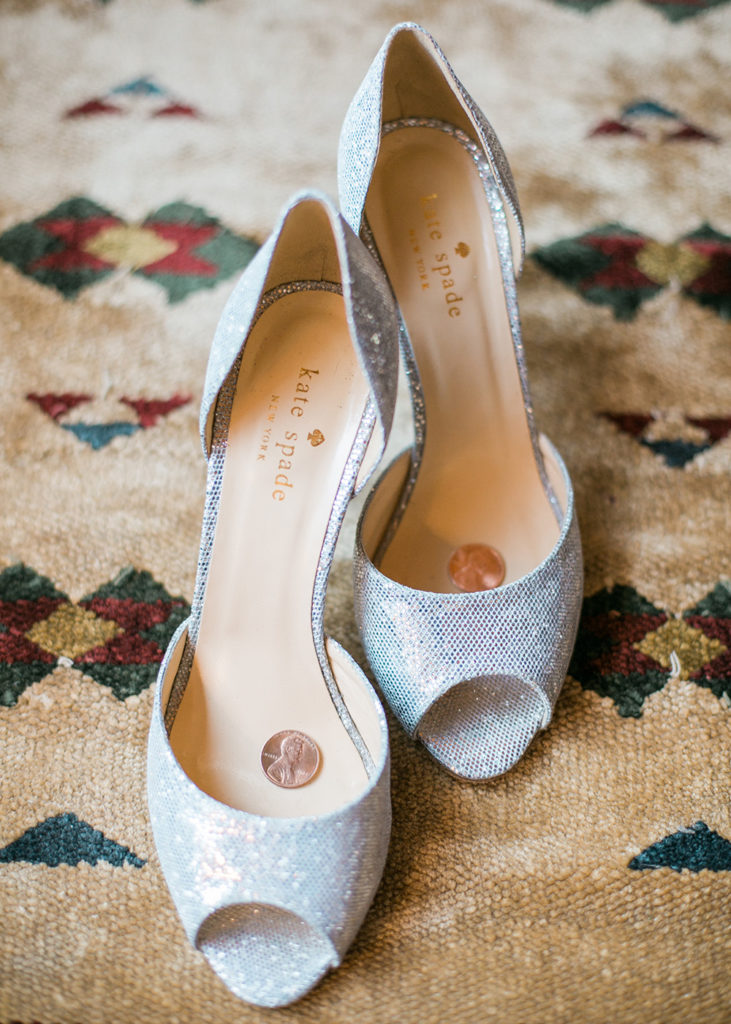
FAQs about German Weddings
What to wear to a German Wedding?
This one depends on many different factors. How close you are to the couple, where the wedding is held and the type of celebration all determine your outfit. Typically anything from cocktail to formal is acceptable and to your discretion!
What are some traditional wedding decorations?
Some choose to decorate with cornflowers (Germany’s national flower) within their floral arrangements. The blue-violet colour they exude serve for stunning decor.
Which finger does the wedding ring go on?
Wedding bands are traditionally worn on the right hand in Germany. The engagement ring is traditionally worn on the left hand, however many couples do not wear an engagement ring at all. After the couple gets married, the engagement ring is replaced with a wedding ring, which is generally a plain band, on the right hand to symbolise the shift in social position.



